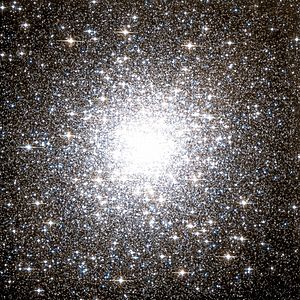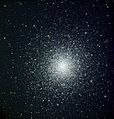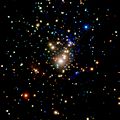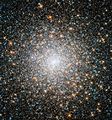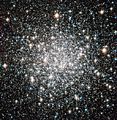Star cluster facts for kids
A star cluster is a group of stars. They are held together by mutual gravitation. They are related by common origin, and have similar or identical ages.
In contrast, constellations and asterisms are just line-of-sight visual groups as seen from the Earth.
There are two major types of clusters:
- open star clusters. Open clusters are loose, and they have less than a few hundred stars, which are often very young. A famous star cluster is the Pleiades, which is an open cluster.
- globular clusters. Globular clusters are tight groups of hundreds and thousands of stars. Every large galaxy has hundreds or thousands of globulars revolving round it at great distances, usually outside the disk of the galaxy.
Star clusters visible to the naked eye include the Pleiades, Hyades, and 47 Tucanae.
Super star clusters
Super star clusters of very young large stars are known. They are thought to be precursors of globular clusters. The short-lived huge blue stars emit lots of UV radiation which ionises the surrounding gas. Examples are Westerlund 1 and 2 in the Milky Way, and R136 in the Larger Magellanic Cloud.
Images for kids
-
Messier 92, a globular cluster in the constellation of Hercules
-
The Pleiades, an open cluster dominated by hot blue stars surrounded by reflection nebulosity
-
The globular cluster Messier 15 photographed by HST
-
Messier 68, a loose globular cluster whose constituent stars span a volume of space more than a hundred light-years across
-
Scutum Star Cloud with open cluster Messier 11 at lower left
See also
 In Spanish: Cúmulo estelar para niños
In Spanish: Cúmulo estelar para niños


